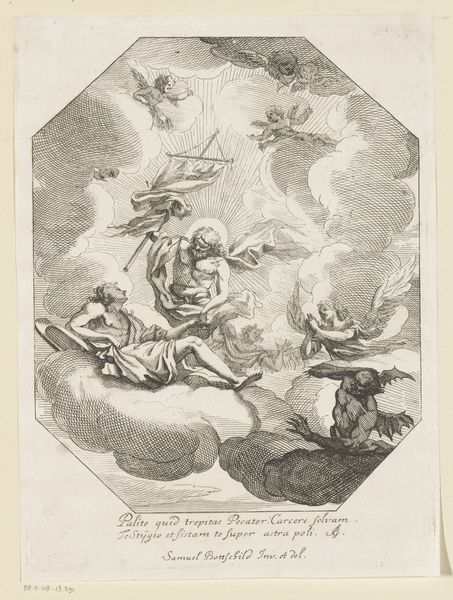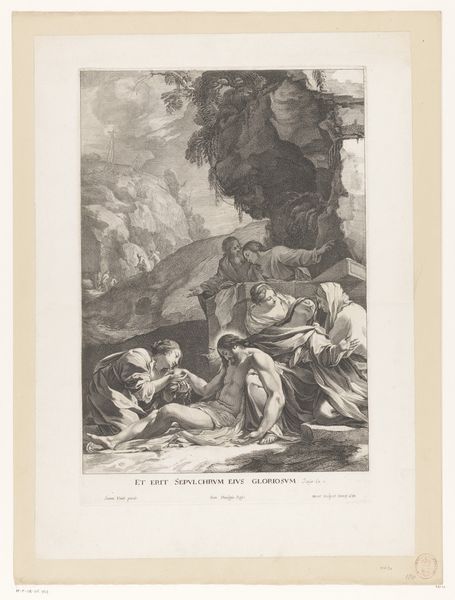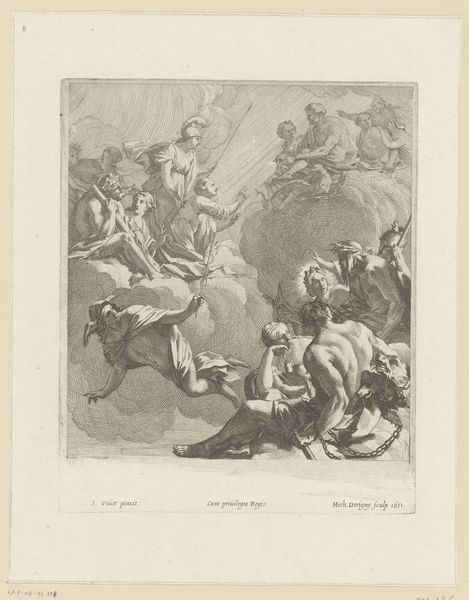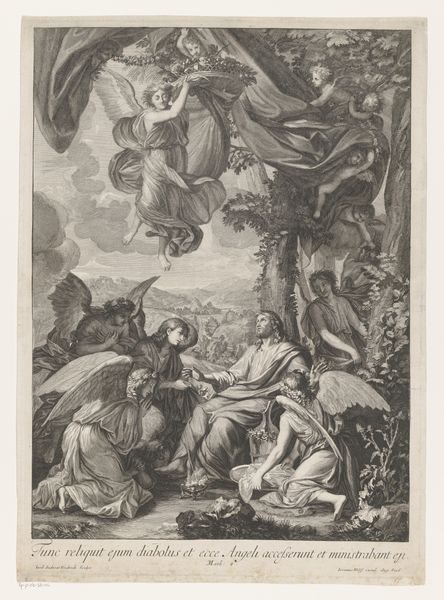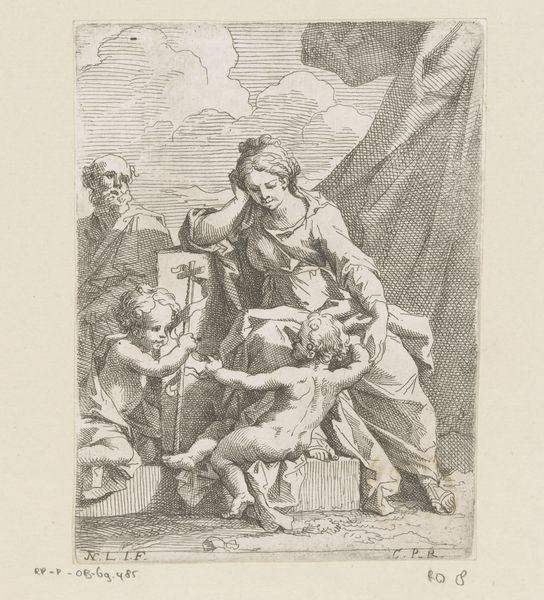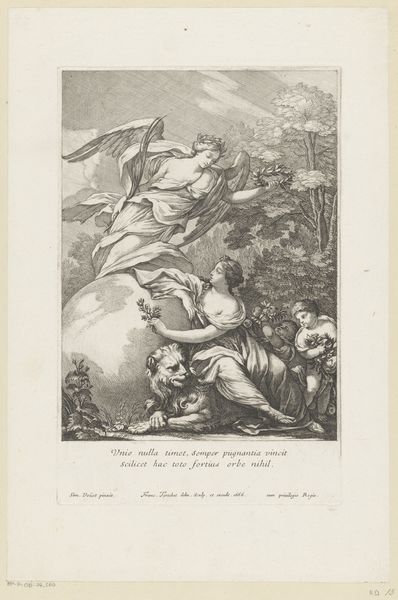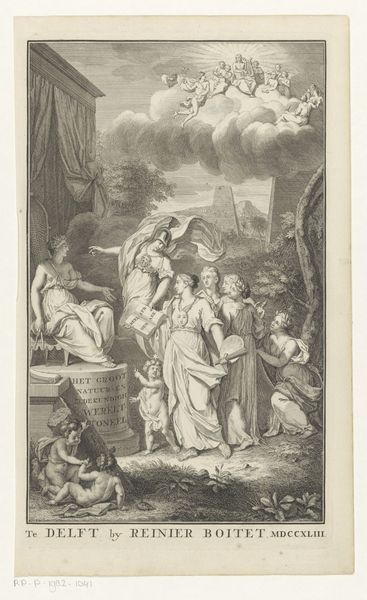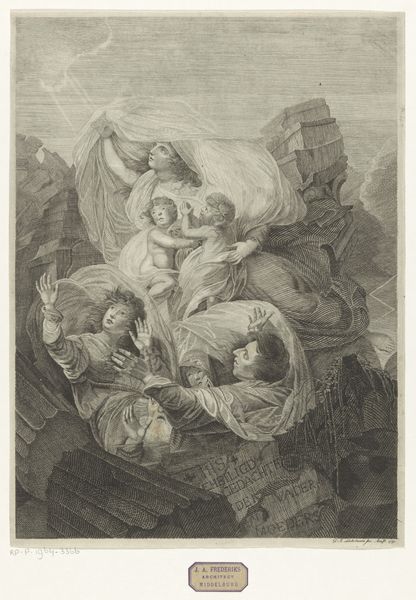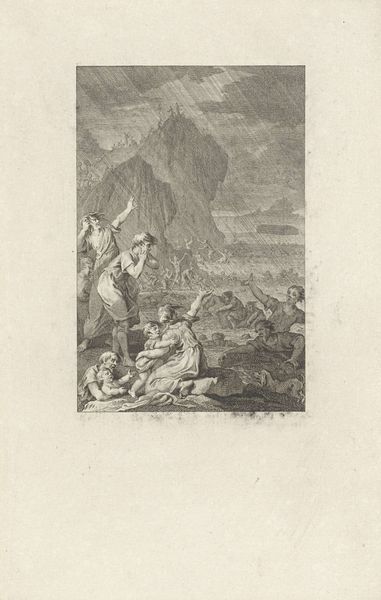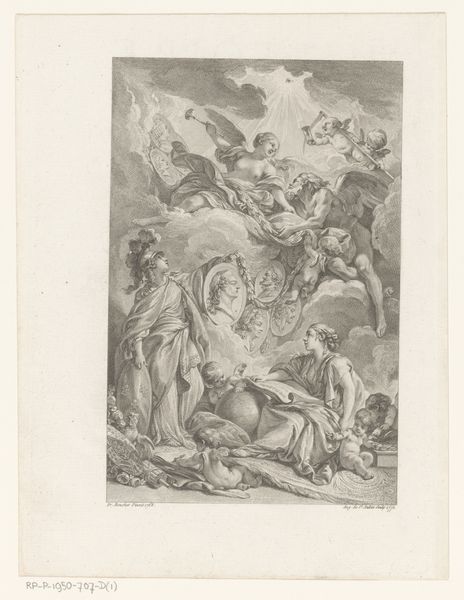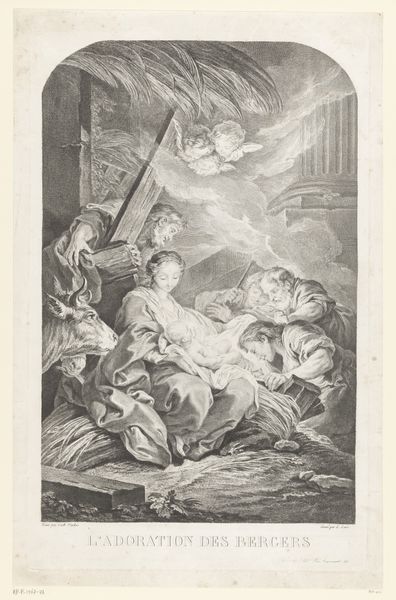
print, engraving
#
narrative-art
#
baroque
# print
#
old engraving style
#
figuration
#
history-painting
#
engraving
Dimensions: height 249 mm, width 208 mm
Copyright: Rijks Museum: Open Domain
Editor: Here we have Michel Dorigny's 1651 engraving, "Death of Niobe's Children." It’s incredibly dramatic! The figures are so expressive in their grief and terror. What's your interpretation of this harrowing scene? Curator: The drama is indeed palpable, isn’t it? It's rooted in the tale of Niobe, a queen punished for her hubris. This wasn't just a personal tragedy, but a blatant demonstration of patriarchal power. How does it strike you that this image, reproduced via printmaking, disseminated a moral lesson about female defiance across 17th-century society? Do you see echoes of similar narratives being perpetuated today? Editor: That’s a really interesting point! I hadn’t considered the role of printmaking in spreading that message so widely, almost as a form of propaganda. So, Niobe’s tragedy wasn't just about losing her children but also about the consequences of challenging authority? Curator: Precisely. It encourages us to ask whose stories get told, and by whom? In this image, Dorigny isn’t merely illustrating a myth; he’s actively participating in the social construction of gender roles. And if we consider that through a contemporary feminist lens, it unveils that these supposedly outdated stories still shape our thinking. Do you find the figures' depiction gendered at all? Editor: Well, Niobe is definitely presented as hysterical and helpless, whereas the gods are these detached, powerful figures… It’s definitely something to think about. Thanks for this point of view! Curator: Absolutely! By unpacking the underlying social and political context, even historical art can spark vital dialogues about contemporary issues. It demonstrates the power of visual media to communicate certain ideologies across time, doesn’t it? Editor: Yes, it really brings the historical context into perspective, seeing the work as not just art, but also a social and political statement.
Comments
No comments
Be the first to comment and join the conversation on the ultimate creative platform.
